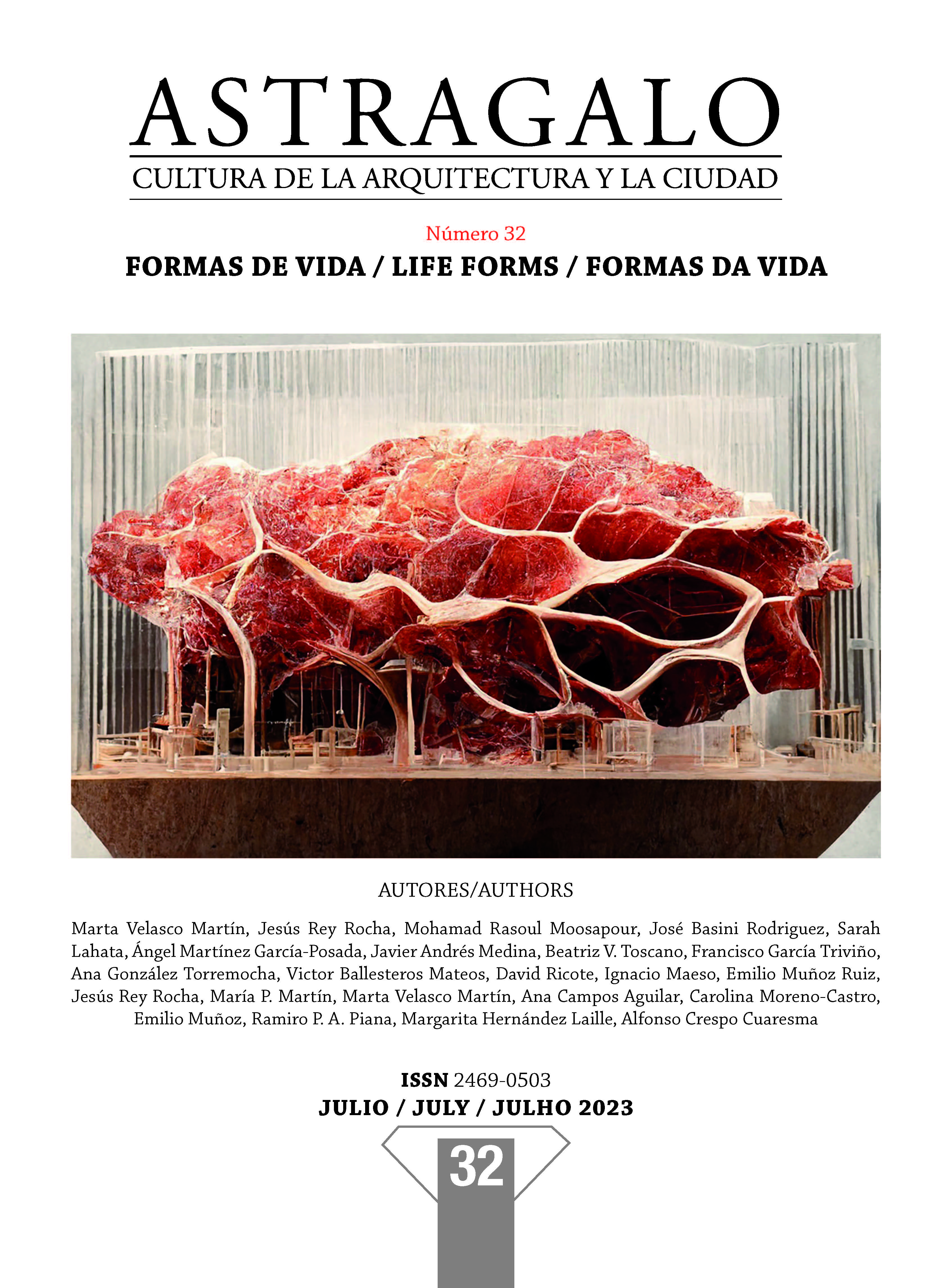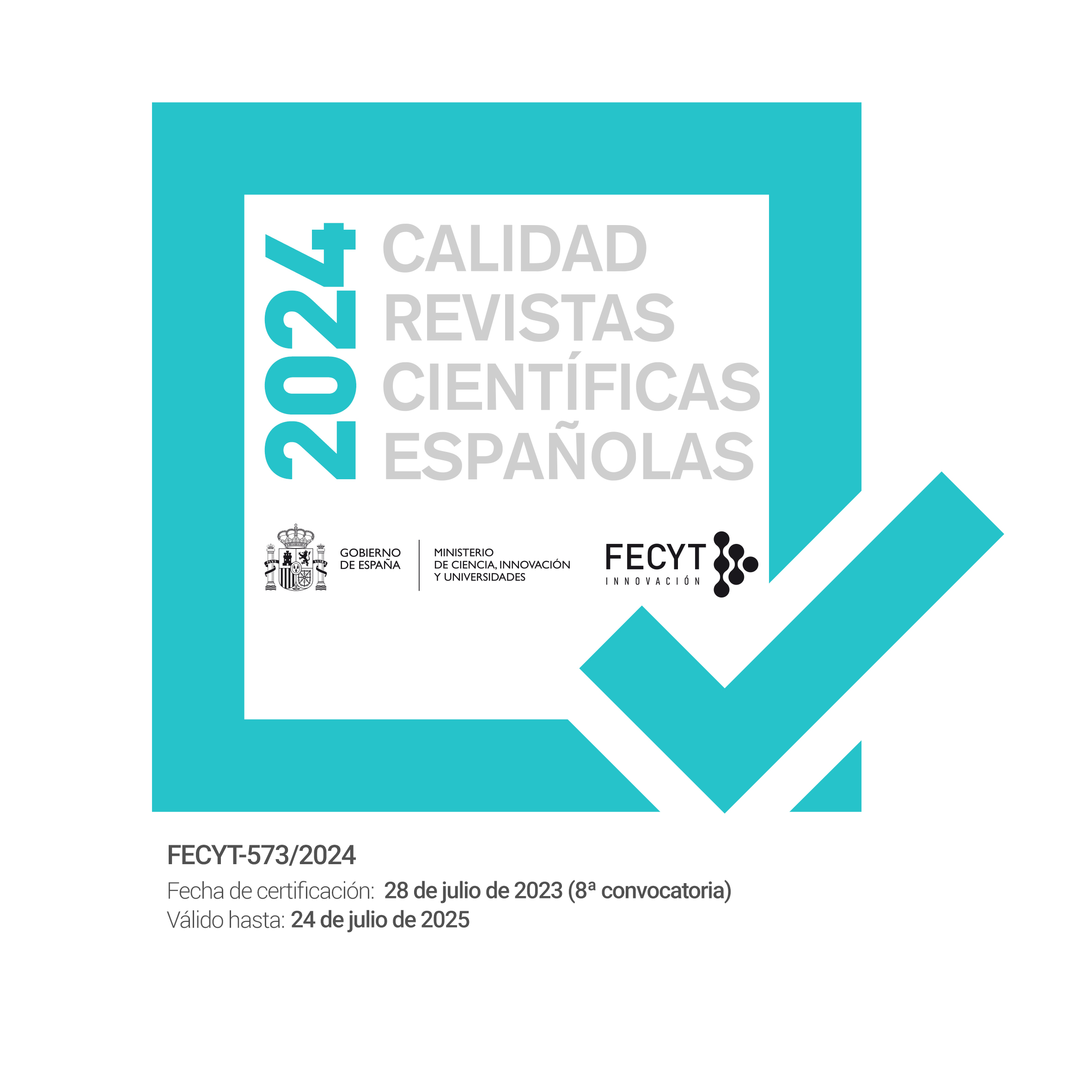The COVID-19 pandemic as a biological individual: a new theoretical model
DOI:
https://doi.org/10.12795/astragalo.2023.i32.09Keywords:
biological individual, levels of organization, pandemic, COVID-19Abstract
In this manuscript we interpret the COVID-19 pandemic as a biological individual divided into five levels of organization. To that end, we first introduce the concept of biological individual, by comparing them with other complex individuals such as the holobiont. Then we summarize what levels of organization are usually recognized in biology, offering examples of agents with their own ontology related to their own level of organization. When applied to the description of the COVID-19 pandemic, we would have the following levels of organization with their corresponding levels: N1-Molecular, composed of the SARS-CoV-2 virus. N2-The cell, represented by the infected cell. N3-The organismic level, having as agent the diseased organism of COVID-19. N4-The ecological level, which would be that of the pandemic as such. And to these, we add one of our own, the N5-Linguistic-symbolic, composed of the network of messages and images shared mostly by electronic means related to the COVID-19 pandemic. From this description, we will relate the levels of organization, first indicating the bottom-up emergence from the lower level to the higher ones, where the reproduction of the agents of each level reaches a threshold where they create a phenomenon at the next level of organization. Similarly, the regulatory relationship between top-down levels forms a network of inhibitions that regulates the reproduction of the lower levels, thus defining and delimiting both the spatial and temporal figure of the biological individual of the COVID-19 pandemic.
Downloads
References
Bavel, Jay J. Van, Katherine Baicker, Paulo S. Boggio, Valerio Capraro, Aleksandra Cichocka, Mina Cikara, Molly J. Crockett, et al. 2020. “Using Social and Behavioural Science to Support COVID-19 Pandemic Response”. Nature Human Behaviour 4 (5): 460-71. https://doi.org/10.1038/s41562-020-0884-z.
Brooks, Daniel S., James DiFrisco, y William C. Wimsatt, eds. 2021. Levels of organization in the biological sciences. Vienna series in theoretical biology. Cambridge, Massachusetts: The MIT Press.
Craver, Carl F., y William Bechtel. 2007. “Top-down Causation Without Top-down Causes”. Biology & Philosophy 22 (4): 547-63. https://doi.org/10.1007/s10539-006-9028-8.
Dawkins, Richard. 1976. The selfish gene. New York: Oxford University Press.
Gilbert, Scott F. 2020. “Developmental Symbiosis Facilitates the Multiple Origins of Herbivory”. Evolution & Development 22 (1-2): 154-64. https://doi.org/10.1111/ede.12291.
Gover, Angela R., Shannon B. Harper, y Lynn Langton. 2020. “Anti-Asian Hate Crime During the COVID-19 Pandemic: Exploring the Reproduction of Inequality”. American Journal of Criminal Justice 45 (4): 647-67. https://doi.org/10.1007/s12103-020-09545-1.
Guay, Alexandre, ed. 2016. Individuals across the sciences. Oxford; New York: Oxford University Press.
Hull, David L. 1976. “Are Species Really Individuals?” Systematic Zoology 25 (2): 174. https://doi.org/10.2307/2412744.
Hull, David L. 1978. “A Matter of Individuality”. Philosophy of Science 45 (3): 335-60. https://doi.org/10.1086/288811.
Müller-Wille, Staffan. 2010. “Cell Theory, Specificity, and Reproduction, 1837–1870”. Studies in History and Philosophy of Science Part C: Studies in History and Philosophy of Biological and Biomedical Sciences 41 (3): 225-31. https://doi.org/10.1016/j.shpsc.2010.07.008.
Nicholson, Daniel J. 2019. “Is the Cell Really a Machine?” Journal of Theoretical Biology 477 (septiembre): 108-26. https://doi.org/10.1016/j.jtbi.2019.06.002.
Puhach, Olha, Benjamin Meyer, y Isabella Eckerle. 2022. “SARS-CoV-2 Viral Load and Shedding Kinetics”. Nature Reviews Microbiology, diciembre. https://doi.org/10.1038/s41579-022-00822-w.
Roughgarden, Joan, Scott F. Gilbert, Eugene Rosenberg, Ilana Zilber-Rosenberg, y Elisabeth A. Lloyd. 2018. “Holobionts as Units of Selection and a Model of Their Population Dynamics and Evolution”. Biological Theory 13 (1): 44-65. https://doi.org/10.1007/s13752-017-0287-1.
Schneeweiß, Niklas, y Harald Gropengießer. 2019. “Organising Levels of Organisation for Biology Education: A Systematic Review of Literature”. Education Sciences 9 (3): 207. https://doi.org/10.3390/educsci9030207.
Sender, Ron, Shai Fuchs, y Ron Milo. 2016. “Revised Estimates for the Number of Human and Bacteria Cells in the Body”. PLOS Biology 14 (8): e1002533. https://doi.org/10.1371/journal.pbio.1002533.
Tweedell, Rebecca E., Sivakumar Prasanth Kumar, y Thirumala-Devi Kanneganti. 2023. “Innate Sensing Pathways: Defining New Innate Immune and Inflammatory Cell Death Pathways Has Shaped Translational Applications”. PLOS Biology 21 (2): e3002022. https://doi.org/10.1371/journal.pbio.3002022.
V’kovski, Philip, Annika Kratzel, Silvio Steiner, Hanspeter Stalder, y Volker Thiel. 2021. “Coronavirus Biology and Replication: Implications for SARS-CoV-2”. Nature Reviews Microbiology 19 (3): 155-70. https://doi.org/10.1038/s41579-020-00468-6.
Wilson, Robert A. and Matthew J. Barker. 2021. “Biological Individuals”. The Stanford Encyclopedia of Philosophy (Winter 2021 Edition), Edward N. Zalta (ed.), URL = <https://plato.stanford.edu/archives/win2021/entries/biology-individual/>.
Downloads
Published
How to Cite
Issue
Section
License
Copyright (c) 2023 David Ricote, Ignacio Maeso

This work is licensed under a Creative Commons Attribution-NonCommercial-ShareAlike 4.0 International License.












 2024 QUALIS-CAPES: Anthropology / Archaeology A3; Architecture, Urban Planning And Design A3; Urban And Regional Planning / Demography A3
2024 QUALIS-CAPES: Anthropology / Archaeology A3; Architecture, Urban Planning And Design A3; Urban And Regional Planning / Demography A3





